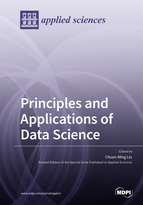Principles and Applications of Data Science
A special issue of Applied Sciences (ISSN 2076-3417). This special issue belongs to the section "Computing and Artificial Intelligence".
Deadline for manuscript submissions: closed (20 April 2022) | Viewed by 21425
Special Issue Editor
Interests: big data management and processing; uncertain data management; data science; spatial data processing; data streams; ad-hoc and sensor networks; location-based services
Special Issues, Collections and Topics in MDPI journals
Special Issue Information
Dear Colleagues,
Data science is an emerging multidisciplinary field which lies at the intersection of computer science, statistics, and mathematics, with different applications and related to data mining, deep learning, and big data. This Special Issue focuses on the latest development on the theories, techniques, and applications of data science, and authors are invited to submit unpublished and original works. Potential topics include, but are not limited to:
- Data Cleansing
- Data Analytics
- Data Mining
- Machine Learning
- Deep Learning
- Data Engineering
- Big Data Management and Processing
- Uncertain Data Management and Processing
- Streaming Data Management and Processing
- Spatial–Temporal Data Management and Processing
- Data Science of Internet of Things (IOTs)
- Data Science of Medical Applications and Healthcare
Prof. Chuan-Ming Liu
Guest Editor
Manuscript Submission Information
Manuscripts should be submitted online at www.mdpi.com by registering and logging in to this website. Once you are registered, click here to go to the submission form. Manuscripts can be submitted until the deadline. All submissions that pass pre-check are peer-reviewed. Accepted papers will be published continuously in the journal (as soon as accepted) and will be listed together on the special issue website. Research articles, review articles as well as short communications are invited. For planned papers, a title and short abstract (about 100 words) can be sent to the Editorial Office for announcement on this website.
Submitted manuscripts should not have been published previously, nor be under consideration for publication elsewhere (except conference proceedings papers). All manuscripts are thoroughly refereed through a single-blind peer-review process. A guide for authors and other relevant information for submission of manuscripts is available on the Instructions for Authors page. Applied Sciences is an international peer-reviewed open access semimonthly journal published by MDPI.
Please visit the Instructions for Authors page before submitting a manuscript. The Article Processing Charge (APC) for publication in this open access journal is 2400 CHF (Swiss Francs). Submitted papers should be well formatted and use good English. Authors may use MDPI's English editing service prior to publication or during author revisions.






